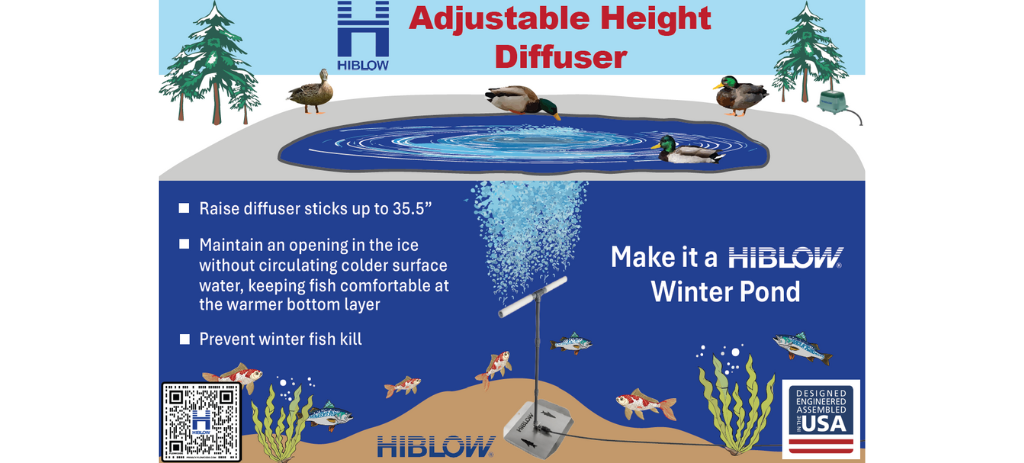With careful planning and diligence, setting up an aeration system is manageable and can save you a significant amount of money if you do it yourself. Below is a step-by-step guide for installing an aeration system.
Planning for Installation
Determine Your Goal:
What are you trying to get out of your aeration system? Are you trying to reduce algae and other organic matter and improve water clarity? Are you trying to increase the fish population? If yes, what type of fish are you trying to grow? Do they need a specific temperature to thrive? Are you trying to prevent fish kill in the winter? This information is important as we work through the set-up.
Power Source:
Choosing your power source impacts the balance of the installation. Utilizing AC electricity is the easiest and often most cost-effective solution, certainly in the short-term. However, sometimes electrical power is too far away. In that instance, solar or wind power can be very effective, but the installation process becomes more complex, and the up-front cost is significantly more. If solar is of interest, check out our article on DIY solar aeration: https://www.hiblow-usa.com/2021/06/07/diy-solar-pond-aeration/
Pond Size and Depth:
The size and depth of the pond is essential to understand before proceeding as it impacts which size and type of aerator you need, the diameter of the tubing, and the type of the diffuser. Take careful measurements and note the shape of your pond.
Choosing Aeration Technology:
The 3 most common aeration technologies for homeowners are: fountains, rocking pistons, and linear diaphragm air pumps.
Fountains are visually appealing and provide some aeration to the pond, however they are considered surface aerators only pulling water from the top couple of feet. They are often used in addition to subsurface aeration. They require a significant amount of energy, so are not typically powered by solar or wind.
Linear diaphragm air pumps and rocking pistons provide subsurface (bottom diffused) aeration. Subsurface aeration adds dissolved oxygen to the pond, but most importantly, mixes the oxygen rich surface water throughout the water column. The oxygen starved water at the bottom of the pond is cycled to the surface where it releases toxic anoxic gas into the atmosphere while absorbing oxygen.









No comments:
Post a Comment